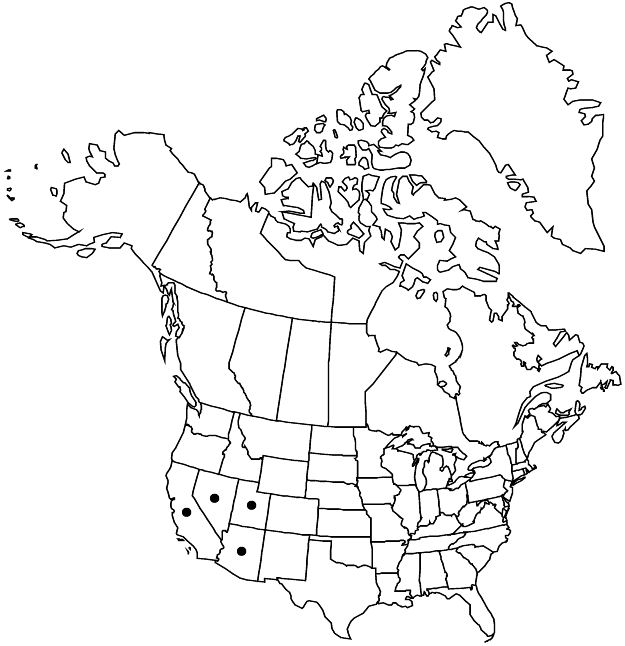Difference between revisions of "Eremalche exilis"
Leafl. Bot. Observ. Crit. 1: 208. 1906.
FNA>Volume Importer |
imported>Volume Importer |
||
| Line 56: | Line 56: | ||
|publication year=1906 | |publication year=1906 | ||
|special status= | |special status= | ||
| − | |source xml=https:// | + | |source xml=https://bibilujan@bitbucket.org/aafc-mbb/fna-data-curation.git/src/bb6b7e3a7de7d3b7888a1ad48c7fd8f5c722d8d6/coarse_grained_fna_xml/V6/V6_447.xml |
|subfamily=Malvaceae subfam. Malvoideae | |subfamily=Malvaceae subfam. Malvoideae | ||
|genus=Eremalche | |genus=Eremalche | ||
Revision as of 23:40, 27 May 2020
Plants prostrate to decumbent; stems sometimes flushed with purple-maroon, branched or unbranched, 2–40 cm, obscurely stellate-hairy. Leaf blades 3- or 5-cleft or -lobed to ± 1/2 to base, 1–2.5 cm wide, divisions entire or 3-toothed at tip. Inflorescences seldom exceeding leaves, sometimes basal. Pedicels 0.2–1 cm, longer in fruit; involucellar bractlets threadlike to linear, 3.3–5.5(–7) mm. Flowers: calyx 4–5.5(–7) mm, lobes 3–5 × 1.5–2.5 mm; petals white or pale rose-lavender, 4–5.5 mm, equaling calyx. Mericarps 9–13, brownish to blackish, ± wedge-shaped, cushionlike, 1.4–1.8 mm, margins rounded, radially corrugated. 2n = 20, 40.
Phenology: Flowering late winter–spring.
Habitat: Sandy or rocky desert soil
Elevation: 100–1500 m
Distribution

Ariz., Calif., Nev., Utah, Mexico (Baja California, Sonora).
Discussion
Eremalche exilis occurs in the Mojave and Sonoran deserts.
Selected References
None.